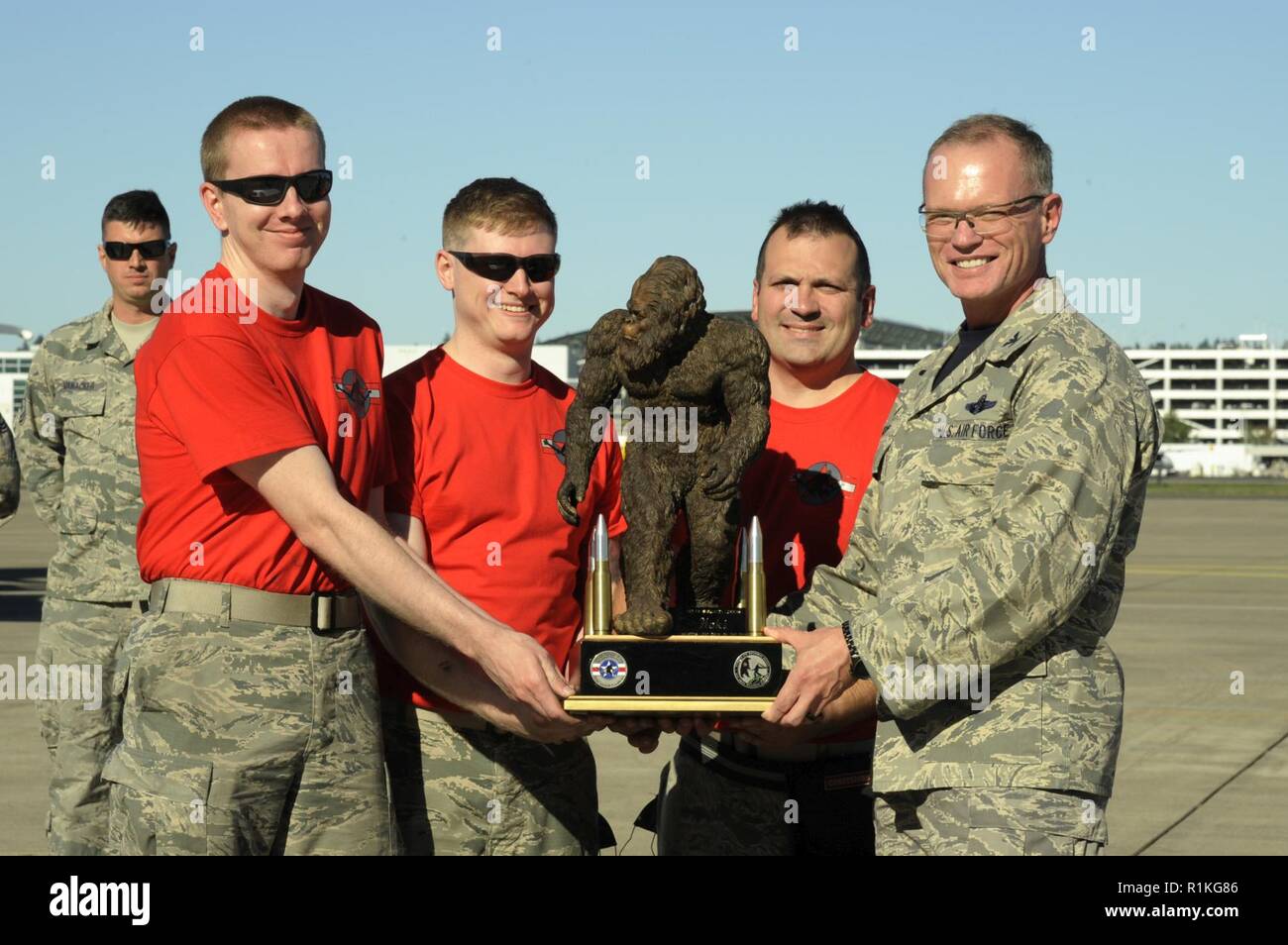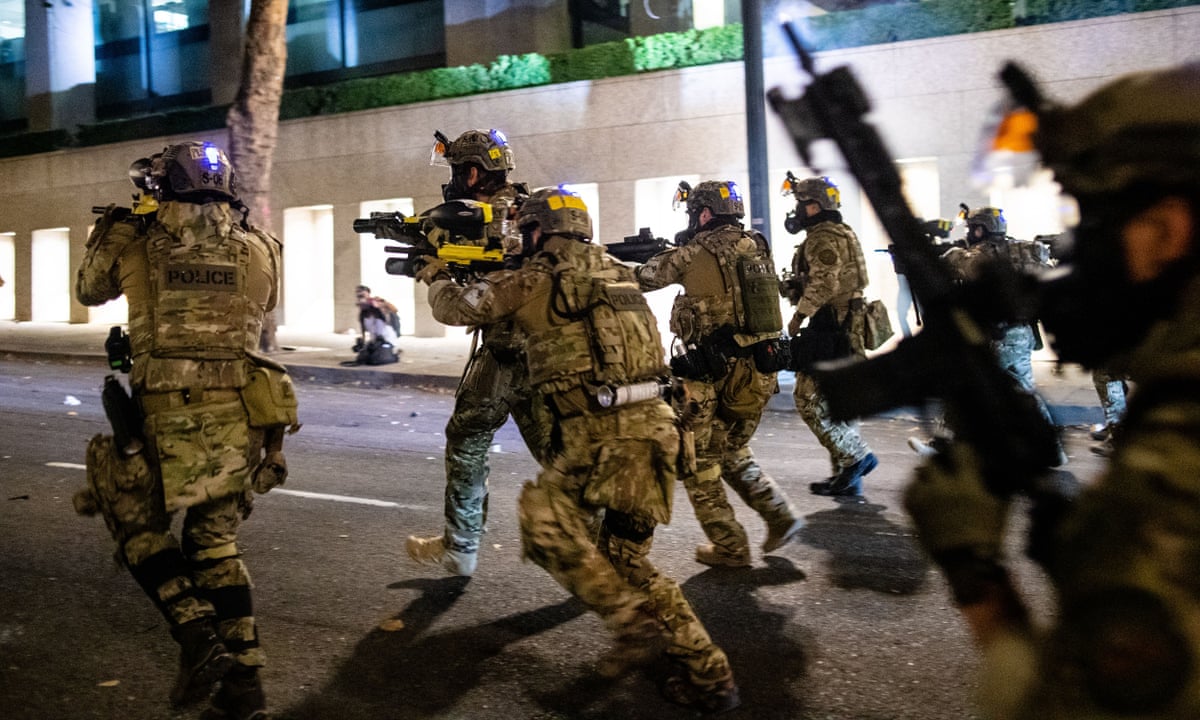Portland Military Base - F-15C Eagles from the Oregon Air National Guard's 142nd Fighter Wing at Portland Air National Guard Base in 2010.
45°34′56″N 122°35′23″W / 45.58222°N 122.58972°W / 45.58222; -122.58972 (Portland ANGB L-33 ) Coordinates: 45°34′56″N 122°35′23″W / 45.58222°N 122.58972°N 122.58972°W / 5 / 2 . -122.58972 (Portland ANGB L-33)
Portland Military Base

Portland Air National Guard is a United States Air Force base located at Portland International Airport, in Portland, Oregon.
Triangular Ufo Or Top Secret Military Aircraft Captured On Video Near Us Air Force Base
The base is home to the Oregon Air National Guard's 142nd Fighter Wing. The 142nd FW participates globally in support of narcotics interdiction, NORAD air defense, as well as contingency operations such as Operations Noble Eagle, Freedom Time, and Iraqi Freedom. To accomplish these missions, four groups are assigned to the 142nd Fighter Wing: the 142nd Sustainment Group, the 142nd Operations Group, the 142nd Mission Support Group, and the 142nd Medical Group.
The history of the base began in 1936, when funding from the Works Progress Administration (WPA) allowed the city of Portland to purchase 700 acres of land along the Columbia River and bordering the Columbia Slough for a "Super Airport" to replace the previous facility that had been established in 1926
On July 1, 1940, the headquarters of the Northwestern Air District established a small depot to service military aircraft using the airfield. The 57th Service Squadron moved to the airfield from Hamilton Field, California on 31 March 1941, with the Air Corps facility designated as Portland Army Air Force Base. Because of ties between the United States and the Empire of Japan, the Oregon National Guard deployed its 123rd Observation Squadron with North American O-47s to conduct patrols over the approaches to the Columbia River and Oregon's Pacific coast.
The initial use of the base by the Air Corps was when the Northwest Air District moved the 55th Pursuit (Interceptor) Group to the new base in late May 1941 from Hamilton Field. Three squadrons of P-43 Lancers (predecessor to the Republic P-47 Thunderbolt) operated from the base. The Portland AAB was also used as a transport field, with the 64th Transport Group at March Field, California deploying its 16th Transport Squadron to the base in July 1941 with C-47s. Later, during World War II, the base was a very active airlift center with about 47 military transport landings per day.
America's 'not A Dictatorship': Oregon Governor Rebukes Trump Over Portland Feds In Unmarked Vehicles
After the attack on Pearl Harbor, the 17th Bombardment Group at Puddleton Airport in northeastern Oregon, now called Eastern Oregon Regional Airport, the 34th Bombardment Squadron equipped with B-25 Mitchells (as part of the Sierra Bombardment Group) to fight submarines and coba along the Pacific coast. P-43s of the 55th PG also flew reconnaissance missions until February 1942, when they were moved to Pine Field, Washington (although two of the squadrons were scattered to different airfields in the Pacific Northwest immediately after the attack).
The 42d Bombardmt Group used Portland as a B-25 Mitchell training base early in the war. His 75th Bombardment Squadron moved into the field in January 1942 and by March was training B-25 fighter crews. The squadron itself was sent to New Caledonia in April and ceased operations in June of that year.
The 28th Combined Arms Group at Elmdorf Field, Alaska Territory, stationed its 406th Bombardment Squadron at Portland during the summer and fall of 1942 as a B-25 OTU. The pilots and crew were deployed in the Aleutian Campaign. The squadron moved to Alaska in November to direct the Japanese into combat, after the campaign ended in October 1943, it returned briefly to Portland in October 1943 to equip itself with new B-25s from North America , before being redeployed to RAF Alconbury. , gland. The 47th Bombardment Squadron (41st Bombardment Group) also received B-25s at Portland before deploying to the Pacific theater at Tarawa.

In late 1943, IV Fighter Command established a third phase of a fighter training program at Portland to complete the training of the squadrons after their initial formation. The 354th Fighter Group moved into the field in October 1943 and flew P-39 Airacobras for about a month before deploying to the island. However, the 354th was the only fighter unit training at Portland, and the Fourth Air Force turned the field into a substitute training base. The 372nd Fighter Group was sent to Portland in November 1943 and flew the RTU mission with three P-39 squadrons until March 1944.
Oregon Air National Guardsman Master Sgt. Mark Mahle Readies An F 15 Fighter Jet, Of The 142nd Fighter Wing, For A Training Mission At The Base In Portland, Oregon August 17, 2005. An
With the departure of the fighter RTU in April 1944, the Portland Air Force reverted to its transport mission until the end of the war, operated jointly with the civilian airfield. It was deactivated in 1946.
In 1947, the Tactical Air Command (TAC) reestablished part of the United States Air Force at Portland Airport, and Portland Air Force Base was activated as a joint military/civilian facility.
The Air Reserve's 349th Carrier Group at Hamilton AFB, California began deploying C-46 Commando transports to several carrier squadrons to the airfield under the TAC of the Twelfth Reserve Area. In 1949, the USAFR 403d Troop Carrier Wing, Medium, was stationed at the airfield. In 1952, the 406th was assigned to Far East Air Force Base in Japan for duty in the Korean War. He returned to Portland in 1953 and remained until 1957 flying C-119 Flying Boxcars until he was transferred to Selfridge AFB, Michigan.
In March 1948, the Air Defense Command (ADC) activated an AN/TPS-1B radar at Portland Airport. It was installed and activated on a 24-hour basis in March 1948 as a "Temporary" site to protect the air approaches to Hanford, Washington. In August 1950, the site was included in the Lashup system, designated "L-33". In 1951, the AN/TPS-1B search radar was joined by the AN/CPS-5 search radar. Operations ceased in Feb 1952 with the activation of Site "P-12" in northern Bd AFS in southern Oregon.
File:portland Ang Base Uso Tour 150416 Z Ch590 009.jpg
In 1952, jurisdiction over Portland AFB was transferred from TAC to Air Defense Command. The ADC activated the 503d Air Defense Group on 1 February 1952. The 503d ADG controlled the 497th F-94 Starfire Fighter-Interceptor Squadron and the 357th F-86D Saber Fighter-Interceptor Squadron from the base. In 1955, the group was redesignated the 357th Fighter Group. The 357th remained at Portland, controlling several interceptor squadrons until 30 March 1966, when ADC deactivated the base.
The 142nd Fighter Group was activated at Portland on 1 Mar 1951. The group was assigned to the Oregon ANG on 24 May 1946, redesignated from the WWII 371st Fighter Group.
After the Air Defense Command closed its facilities in 1966, Portland AFB was decommissioned and military facilities were reduced in size. The 142nd Interceptor Fighter Group hosted the military facilities at Portland International Airport. Around 1990, the Air Force facilities were designated Portland Reserve Station, which was a secure facility on the south side of the airport's main runway and remained a very active hub of the airport. After a major revision of the USAF organizational structure in 1992, the 142d was redesignated the 142d Fighter Wing (142 FW) and became an Air National Guard unit operationally acquired by Air Combat Command (ACC).

In addition to the Oregon Air National Guard, the facility also hosted the Air Force Reserve Command's (AFRC) 939th Rescue Wing (939 RQW), equipped with HC-130 and HH-60 combat search and rescue aircraft ( CSAR). In 2000, the 939th RQW began to transition away from the CSAR mission, transitioning to the KC-135 Stratotanker aircraft and redesignated as the 939th Airborne Refueling Wing (939 ARW).
Oregon Military Department News Via Flashalert.net
BRAC 2005 brought the F-15C/D to the 142nd FW, replacing the A/B model Eagles from the early 1970s, and also directed the decommissioning of the 939th ARW by 2008. BRAC kept the 142nd Expeditionary FW at the combat installation support, which will be designated Portland Air National Guard Base, along with the 244th and 272nd Combat Communications (ANG) Squadrons and the 304th Air Rescue Squadron (AFRC), the 304th will be geographically separate Unit (GSU) of the Air Force 920th Rescue Wing in Florida.
On August 10, 2018, two F-15Cs from the 142nd, both originally Massachusetts National Guard fighters on "exchange" with the Oregon National Guard, intercepted a stolen Horizon Air Bombardier Q400 turboprop over Seattle.
Fighter jets armed with AIM-9 Sidewinder and AIM-120 AMRAAM missiles intercepted and escorted the plane away from populated areas before it crashed on Ketron Island near McCord Air Force Base.
In August 2020, it was announced that Portland would host the Air Force's first operational F-15EX in early 2023 mid-2020s. Coordinated the shorelines of Portland, Maine, the Knebec estuary, and surrounding areas from 1895 to 1950, beginning with the Dicot program. They also include coastal artillery forts and underwater minefields. The command dates from about 1895 as the Portland Artillery District, in 1913 it was designated the Portland Coastal Defs, and again in 1925.
Portland Army Air Base On The Day Of Infamy, December 7, 1941 > 142nd Wing > Display
The Knebec Coastal Defense Command may have originated as the Knebec Artillery District with the establishment of minefield support facilities under the Dickot program in 1890 at Civil War-era Fort Popham in Phippsburg.
However, it is not clear from
Post A Comment:
0 comments so far,add yours